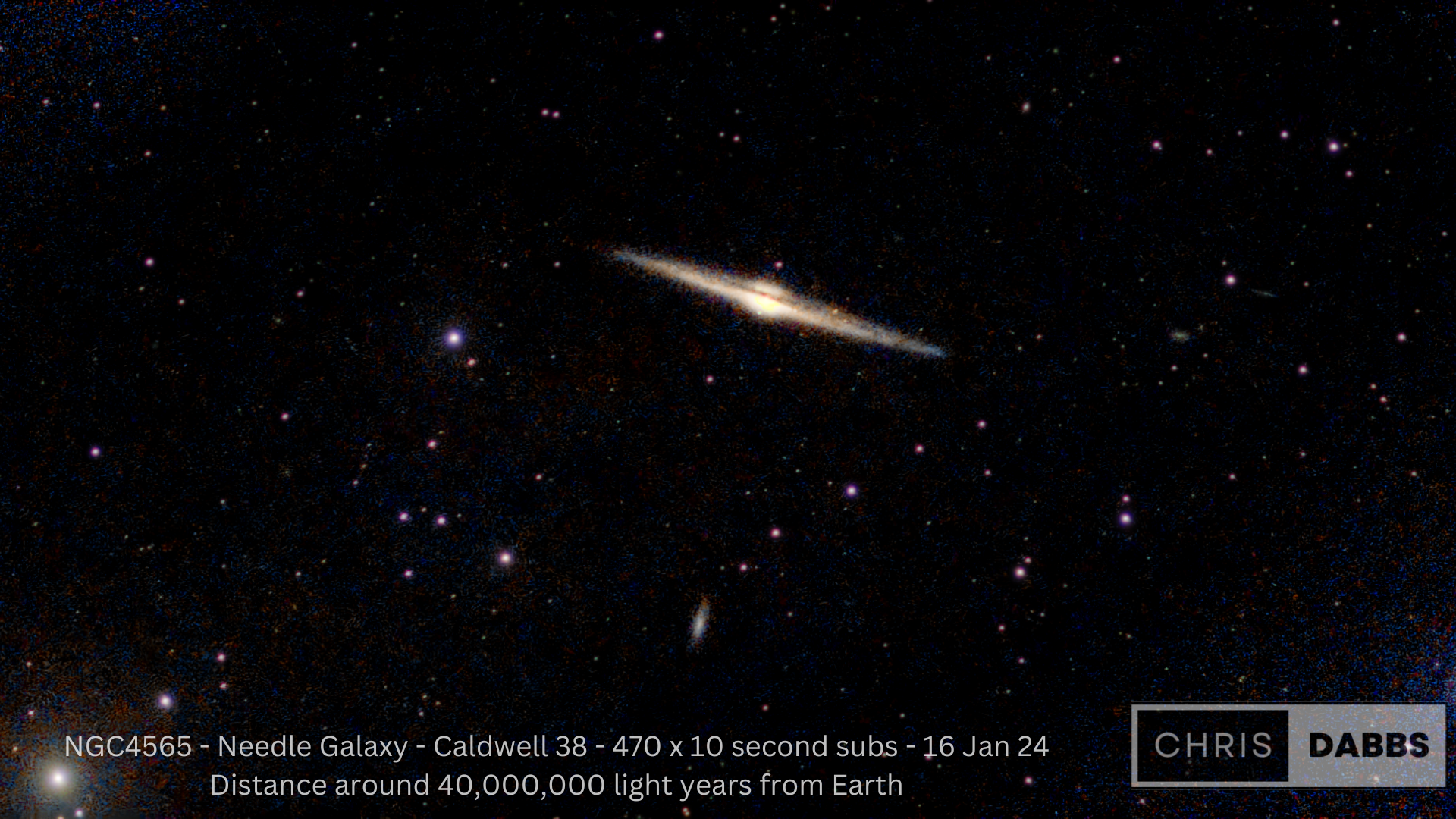
**An Astrophysical Analysis of the Needle Galaxy, NGC 4565**
I was super excited to get the chance to image this one! An early morning start and the good old Seestar S50 getting ready to brace the -3c temperatures we were expecting.
The great thing is that NGC 4565 really pushes what this scope can image; I mean, this galaxy is over 40 million light years away with some estimates saying that it is 50,000,000 light years away!
Within the domain of extragalactic astronomy, NGC 4565 holds a position of considerable interest. Also known as the Needle Galaxy because of its elongated appearance, this spiral galaxy is in an edge-on orientation relative to our vantage point on Earth. You can find it in the constellation Coma Berenices and NGC 4565 offers a rare opportunity to analyse the structural composition of spiral galaxies due to its unique alignment with our line of sight.
Situated at an estimated distance of 40 million light-years from us, the Needle Galaxy provides a comparable, albeit distant, measure to our own Milky Way with a resemblance in both scale and luminosity to our own galaxy. This allows for detailed observation and study, thereby enhancing our understanding of galactic formation and evolution.
The most notable feature of NGC 4565 is its prominent dust lane that cuts across the galactic plane. This dust lane, conspicuous against the galaxy’s luminous central bulge, is of significant interest to professional astronomy. The edge-on perspective minimizes the visual obstruction typically encountered in spiral galaxy cores, facilitating a clearer understanding of the distribution and role of interstellar dust and gas in such systems.
The galaxy is also of interest to astrophysics due to the Needle Galaxy's resemblance in both scale and luminosity to the Milky Way. This similarity allows scientists to infer characteristics of our own galaxy's structure and composition that are otherwise difficult to determine from within.
The orientation of NGC 4565 is a paradigm in the study of disk galaxies. Due to its alignment, astronomers can directly observe and measure phenomena such as halo stars above and below the plane of the galaxy, warp in the disk, and interaction with satellite galaxies and dark matter. Each of these aspects provides critical insights into both the history of NGC 4565 and the dynamic processes shaping galaxies elsewhere.
So NGC 4565 is a cornerstone in our celestial inventory—a galactic mould from which we can admire and while enhancing our knowledge of the “grand design” of the universe.
As such, it continues to be an object of extensive research within the astrophysical community




